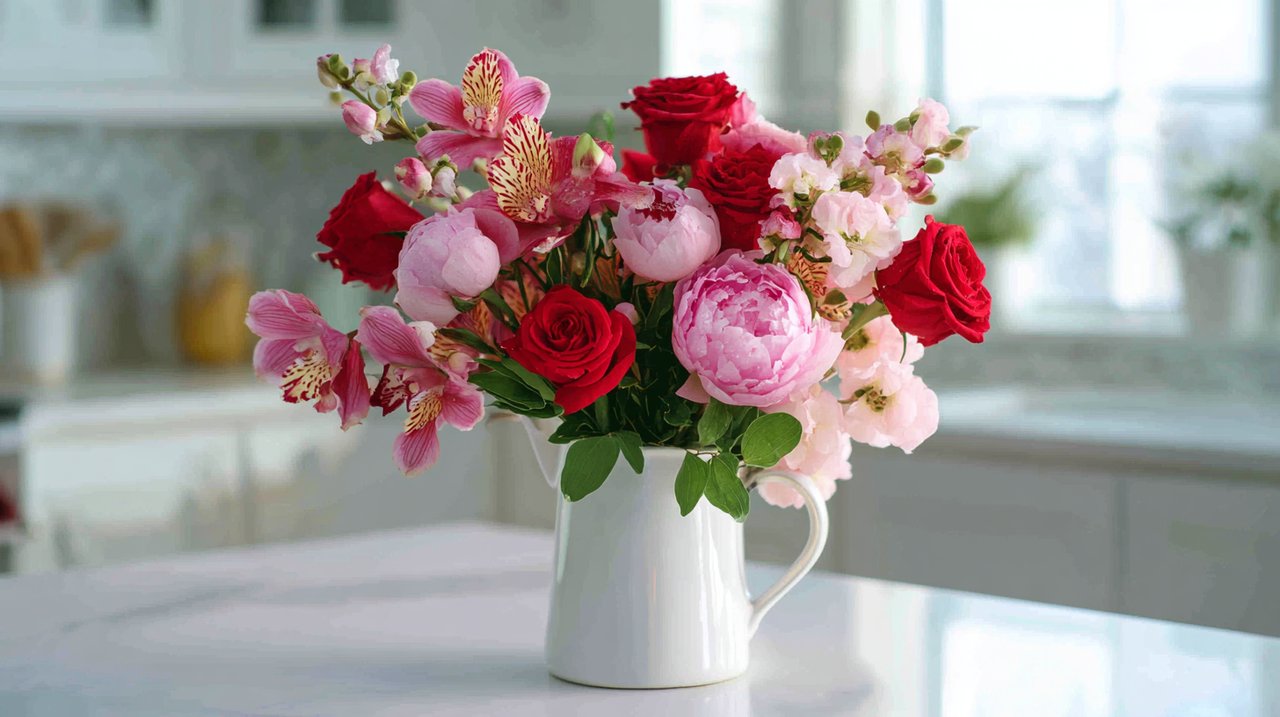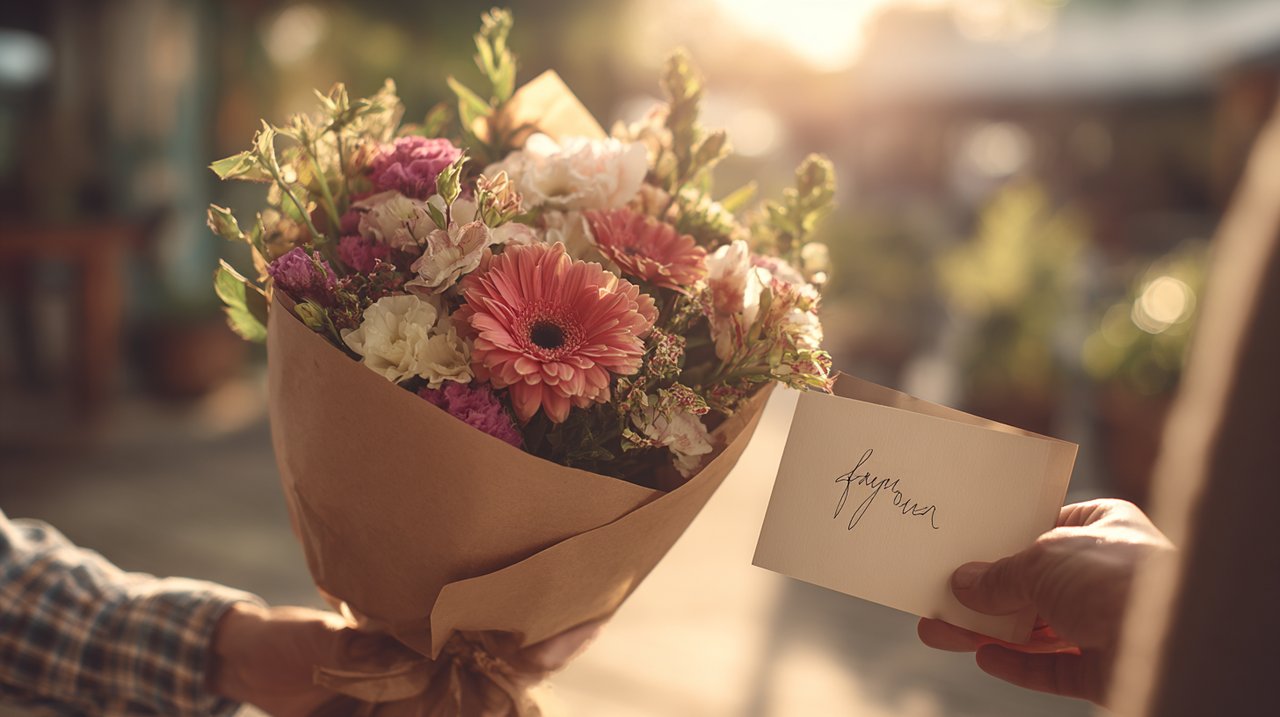Sending flowers feels universally simple, doesn’t it? A beautiful way to express affection, celebrate a moment, or offer sympathy. But for expats in China, this seemingly straightforward gesture can quickly become a fascinating, yet complex, cross-cultural journey. What’s a heartfelt message in one culture might carry a completely different—even unintended—meaning in another. That’s where this guide comes in. Think of it not just as a practical roadmap, but as your essential cultural compass, helping you navigate the subtle yet significant differences to ensure your floral message truly blossoms, rather than inadvertently wilting.
Navigating Cultural Crossroads: Western Sentiments vs. Chinese Traditions
Understanding the recipient’s cultural context is paramount when sending flowers to China. The symbolic weight of flora differs significantly from Western norms, reflecting distinct historical narratives and societal values.
The Silent Language of Flowers: Meanings Beyond Borders
In the West, we often associate flowers with clear-cut emotions – red roses for love, lilies for sympathy. But in China, the ‘silent language’ of flowers is far more intricate. It’s built on an elaborate system of floral symbolism deeply rooted in ancient poetry, philosophy, and folklore. This means a beautiful bouquet here can carry a vastly different, sometimes even unintended, meaning. For instance, while a red rose universally signifies passionate love, a white chrysanthemum, a common bouquet flower in the West, is a strong symbol of remembrance and mourning in China. Sending one for a happy occasion could cause genuine distress!

- Roses (玫瑰, méiguī): Much like in the West, these predominantly symbolize love. Remember, the number of roses you send can also carry specific meanings.
- Lilies (百合, bǎihé): Often represent purity and harmonious union, making them popular for weddings. However, be cautious: white lilies can also be associated with funerals, so context is key.
- Orchids (兰花, lánhuā): Highly esteemed, orchids convey integrity, elegance, and friendship. They are an excellent choice for respected elders or business associates.
- Peonies (牡丹, mǔdan): Known as the ‘King of Flowers’, peonies symbolize prosperity, honor, and good fortune. They’re a superb option for celebrations or housewarmings.
- Chrysanthemums (菊花, júhuā): While beautiful, white and yellow chrysanthemums are strongly linked to funerals and memorials. Always avoid these for celebratory occasions.
Colors, Numbers, and Occasions: Decoding Chinese Floral Etiquette
It’s not just about the flower itself; the overall presentation—including its color, quantity, and the specific occasion—carries significant cultural weight. These aren’t just aesthetic preferences; they are integral parts of your message.
Color Symbolism:
- Red (红色, hóngsè): This is the most auspicious color, symbolizing luck, happiness, and prosperity. It’s perfect for celebrations like birthdays, weddings, and business openings.
- Yellow (黄色, huángsè): Historically, yellow was linked to royalty and power. It can also symbolize friendship, but remember the caution with chrysanthemums!
- Pink (粉色, fěnsè): Represents romance and youth, making it a lovely choice for loved ones.
- White (白色, báisè): While sometimes used in weddings for purity, white is strongly associated with death and funerals. This makes it a risky choice for general gifting and should typically be avoided.
Numerical Significance:
Numbers hold powerful meaning in Chinese culture, often based on homophones—words that sound alike. This is a crucial detail!
- Avoid: The number four (四, sì) sounds like ‘death’ (死, sǐ). Gifting four flowers is highly inauspicious and should never be done.
- Favorable: Numbers like eight (八, bā), which sounds like ‘wealth’ (发, fā), and six (六, liù), sounding like ‘smooth’ or ‘flow’ (流, liú), are highly favored. Nine (九, jiǔ) symbolizes longevity (久, jiǔ).
- For positive connotations, consider bouquets with 6, 8, 9, or 18 flowers.
Occasion Alignment:
The entire purpose of your gift should guide your choices. For business partners, focus on elegance and prosperity. For romantic interests, emphasize passion and sincerity. A mismatch here can truly undermine your good intentions, turning a thoughtful gesture into a cultural misstep.
The Practical Path: Selecting and Sending from Abroad

With the cultural nuances now clear, let’s talk practicalities. Sending flowers from abroad means you have a few key avenues, each with its own set of advantages and challenges.
Online Platforms vs. Local Florists: A Comparative Review
International Online Platforms (e.g., FloraQueen, Interflora):
- Pros: These platforms offer a familiar interface, often with English language support and international payment options like credit cards or PayPal. They essentially act as intermediaries, connecting your order to local florists in China.
- Cons: You might encounter higher markups and less direct control over the specific local florist’s quality. Customization options for unique Chinese preferences can be limited, and their flower selection might lean more Western-centric.
Chinese Local Florists (via WeChat, Taobao, or local websites):
- Pros: The biggest advantage here is authenticity and cultural relevance in the arrangements, along with competitive local pricing and fresh, local blooms. Direct communication allows for very specific requests, especially if you have Chinese language proficiency or a local friend to assist.
- Cons: You’ll need to navigate Chinese websites or apps, and you’ll often need local payment methods like Alipay or WeChat Pay. English language support can be inconsistent, and trustworthiness can vary between vendors.
A smart approach can be a hybrid one: use an international platform for initial ease, then take the time to verify the local partner’s reputation. This can help mitigate some of the common risks.
Payment, Delivery, and Customs: Essential Logistics for Expats
Successfully sending flowers to China also means mastering the logistical details around payment, delivery, and even potential customs considerations. These are critical steps.
Payment Methods: While international credit cards work on global platforms, local Chinese florists primarily rely on Alipay and WeChat Pay. If you don’t have these, consider asking a trusted friend for help or using a service that facilitates local payments.
Delivery Timing: Same-day delivery is often an option in major cities if you order early enough. For special occasions, it’s always wise to order several days in advance. Be sure to specify the exact delivery date and time window, especially for business addresses or residential compounds with restricted access.
Recipient Information: This is non-negotiable: accurate and complete recipient information is paramount. You’ll need the full name, a local Chinese phone number, and a detailed address including street name, building number, apartment number, district, city, and province. Providing the address in Chinese characters is absolutely crucial for local couriers.
Customs and Regulations: For personal gifts of cut flowers, customs procedures are generally straightforward. However, large commercial shipments might face more complexities. Simply ensure your florist knows it’s a personal gift to avoid any unnecessary complications.
Ensuring Your Gesture Blooms: Avoiding Pitfalls and Maximizing Impact
Even the most meticulous planning can’t always prevent unexpected hiccups. But by taking proactive measures and adding thoughtful personalization, you can significantly boost the success and impact of your floral gift.
Addressing Common Challenges: From Delivery Delays to Misunderstandings
Delivery Delays: Factors like traffic, weather, or complicated building access can cause delays. Always communicate clearly with your florist about time-sensitive deliveries, and if possible, provide a backup contact number for the recipient.
Wrong or Damaged Flowers: Quality control can vary. Before ordering, always check florist ratings and recent reviews. If you’re using a local provider, don’t hesitate to ask for a photo of the finished bouquet before it’s dispatched. If any issues arise, document them immediately upon receipt.
Cultural Misunderstandings: Double-check that your chosen flowers and colors perfectly align with the occasion. A seemingly small misstep, like including a white chrysanthemum in a birthday bouquet, can inadvertently send the wrong signal. When in doubt, always opt for universally positive symbols like vibrant red roses or cheerful peonies.
Personalizing Your Message: Bridging Distance with Thoughtfulness

Bilingual Messages: If your recipient isn’t fluent in your native language, always provide your message in both English and Chinese. This shows immense respect and ensures your heartfelt words are clearly understood.
Contextual Relevance: Make your message truly special by referencing shared memories or specific reasons for the gift. This adds a beautiful layer of intimacy and makes the gesture far more meaningful.
Handwritten Notes: Some florists offer handwritten card services. This personal touch can significantly enhance the perceived value and sincerity of your gift, making it truly stand out.
Ultimately, for expats, sending flowers in China is so much more than just a transaction. It’s a powerful act of bridging cultures and nurturing connections across vast distances. By truly understanding the intricate interplay between Western sentiment and Chinese tradition, and by navigating the logistical landscape with informed precision, your thoughtful gesture transforms from a simple delivery into a profound statement of care.
Remember that initial question about whether your floral message would truly blossom or inadvertently wilt? With the insights from this guide, you’re now fully equipped not just to send flowers, but to send a message that resonates deeply, enriching your relationships and leaving a truly lasting impression. Go forth and let your gestures bloom!
💡 Frequently Asked Questions
Understanding the cultural context is crucial, as the symbolism of flowers in China can differ significantly from Western norms. It's important to choose flowers that align with the occasion and avoid those that might carry unintended meanings.
For celebrations, red roses symbolize love, peonies represent prosperity, and orchids convey elegance and friendship. Avoid using white or yellow chrysanthemums, as they are associated with funerals.
Key considerations include using the correct payment methods (like Alipay or WeChat Pay), ensuring accurate recipient information, and allowing sufficient time for delivery, especially for special occasions.
You can personalize your message by providing it in both English and Chinese, referencing shared memories, and considering handwritten notes to enhance the sincerity of your gift.
Avoid sending flowers with negative connotations, such as white chrysanthemums for celebratory events, and ensure that you are aware of the meanings of flower colors and numbers to prevent cultural misunderstandings.

